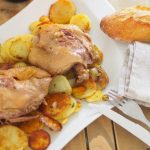Gluten-free baking involves chemical experimentation. It is recommended that you follow all recipes as closely as possible. Here are some additional tips and tricks for gluten-free baking. These include suggestions for substitutes and advice for bakers with an allergy, intolerance, or other autoimmune condition.
Baking Times
Depending on which pan you use, baking times will vary. Check the instructions on the pan before you use it. Make sure that the pan is suitable for the recipe. It is also important to test and tune the oven temperature. An oven thermometer is essential for adjusting the temperature. Finally, baking your baked goods in the middle of a preheated oven will ensure even baking. Bake times for gluten-free food vary widely, so it is important to watch your creation closely to see if there are any changes in color or texture. These recipes require longer baking times and a lower temperature than traditional recipes.
Flavor
It is a good idea for new bakers to add more vanilla and spice to their recipes. These gluten-free flours can have distinctive tastes, so adding flavoring to your recipes will help mask these unusual flavors.
Freshness
Gluten-free grains, starches, and other starches can have a short shelf-life. It is best to purchase them in small quantities and keep them in the fridge or freezer to preserve their essential properties. You can make some flour at home by purchasing whole grains and grinding them with a coffee grinder.
Baked goods should be transferred to a wire rack immediately after baking to prevent them from becoming soggy. To preserve freshness, leftovers can be frozen. Just make sure they are completely thawed before you eat them.
Leavening & High Altitude
To ensure proper leavening, two teaspoons of baking powder should be added to each cup of gluten-free flour. You can use buttermilk or baking soda to make leaven, but you should add 1-1/8 teaspoons of cream of tartar for every 1/2 teaspoon of baking soda. The product will rise better if learners are dissolved in liquid before being added to the dough.
Baking gluten-free at high altitudes requires less liquid, a higher oven temperature, or a longer baking period. Begin by reducing the liquid to 2 tablespoons and increasing oven temperature by 25 degrees F.
Moisture
There are many methods to increase the moisture content of a recipe. You can depend on yogurt, pureed fruit, or sour cream recipes for most products. If your recipe lacks these ingredients, you can substitute brown sugar with white sugar to increase moisture. You can also use honey or agave to increase moisture. However, you need to reduce the number of liquids in your recipe. Honey and agave do not constitute solid ingredients. Add an egg or oil to help, but be careful.
Nutrition
You can increase the nutrition of any recipe by substituting 1/4 cup ground flaxseed for 1/4 cup water.
Structure
Gluten is responsible for baking traditional baked goods. Dry milk solids and cottage cheese can be used in recipes to mimic glutenous structures. If you have too dense or crumbly products, the moisture tricks above can help. Gluten-free dough is not meant to be over-kneaded or -beaten. No gluten can develop from kneading.
Butter
Butter substitutes should be used in sticks, not tubs. These will have a similar moisture content to regular butter. You can substitute shortening, coconut, or olive oil with silken tofu. Combinations of these ingredients are the best.
Eggs
A good substitute is to use a store-bought egg replacer. You can substitute with milled flax seed, silken tofu, or mashed bananas. If you add baking powder, milk can be used. Flax seed must be ground and mixed with hot water before use.
Milk
Regular milk can be replaced with coconut, soy, rice, and nut milk.
Sugar
3/4 cup honey can substitute for 1 cup granulated/brown sugar, provided the liquid in your recipe is reduced by 1/4 Cup. You can substitute honey with maple, brown rice, or agave.



